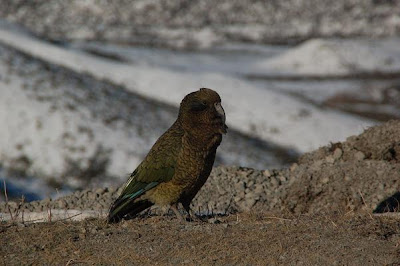[Olive and lemon display in Meknez souq]
The first three weeks of my trip happened to coincide with Ramadan, the month of fasting. From sun up until sun down, no food was allowed to pass the lips of any muslim. This is practiced in order to learn patience, spirituality, humility and humbleness before God. My last week there was Eid Al-Fitr, which marks the end of the fasting when the new moon is first spotted. This is essentially a big party with lots of food and celebration. Everyone was decked out in their finery and smiling. It was good fun.
For our week of Moroccan food here I was constantly telling Stephen stories about this meal or that one. He was even thoughtful enough to make up a batch of paratha dough early in the week, which allowed me to slice, fold and fry them up for breakfast each morning and store the remaining dough back in the fridge. Although parathas are not originally North African, one of the other language students at the school whom I lived with treated me to them each morning - slathered in butter and honey.
Moroccan food is about couscous, cinnamon, saffron, dates and olives. The tajine is probably the most recognized food from that area and a tasty one at that. One of the rules I remember learning from my host family was that the meat was always hidden under the mound of couscous which was in turn covered in vegetables. This ensured that children would have to eat through the important bits to get at the meaty treasure beneath. Another important lesson in a land where hands were the tools used for eating was that only the right hand was ever used to take food from the communal plate. And if possible, it was the only hand used at all. This presumably comes from the sanitary requirements for survival in a water scarce environment.
One of the highlights for me of the week was finally trying chermoula. This is traditionally used as a marinade for fish but we used it with delicious results as a sauce for carrots as well.
[Meat and carrot tajine with leftover chermoula on the carrots]
Chermoula
Taken from der Haroutunian, A. (2009) North African Cookery. Grub Street, London.
4 tablespoons oil
75g butter
1 onion, sliced into rounds
2 cloves garlic, thinly sliced
50g chopped fresh parsley
50g chopped fresh coriander
1 teaspoon black pepper
1/2 teaspoon cinnamon
1/2 teaspoon ginger
1/2 teaspoon saffron diluted in 4 tablespoons water (I didn't have any, it still tasted wonderful)
1/2 teaspoon cumin
1/2 teaspoon thyme
1/2 teaspoon paprika
1 1/2 teaspoons salt
2 bay leaves
1. Heat oil and butter in a saucepan and add all remaining ingredients. Cook over moderate heat for 12-15 minutes, stirring frequently. Remove from the heat and serve hot or cold.
I cooled mine to room temperature and then poured over my white fish fillets. Leftover was stored in the refrigerator and used later in the week tossed in with cooked carrots.































